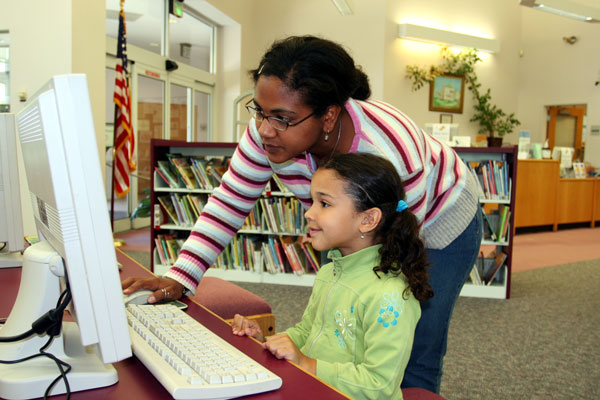Second Grade Academics

English Language Arts
Standards
- Wisconsin English Language Arts Standards (Revised 2020)
Resources
Second Grade Units
| Quarter 1 | Quarter 2 | Quarter 3 | Quarter 4 | |
| Reading | Building Good
Reading Habits and Strong Strategies |
Reading Nonfiction | Building Stamina with Longer and More Complex Text | Character Studies in Books in a Series |
| Writing | Launching Writing Workshop Personal Narrative | Informational and Procedural Writing | Opinion Writing: Letters and
Book Reviews |
Poetry/Fiction Writing |
| Phonics | Growing into Second Grade Phonics | Tackling Multisyllabic Words | Word Builder
Vowel Power |
Word Collecting: Growing Vocabulary |
Parent Resources for ELA
- RAZ Information for Families
Your child has access to an award winning literacy resource. Click on this link to learn more about Raz Plus from Learning A-Z! - Act 20 Resources & Family Activities
Math
Standards
- Wisconsin Math Standards (revised 2020)
Resources
Second Grade Units
| Quarter 1 | Quarter 2 | Quarter 3 | Quarter 4 |
| Unit 1: Figure the Facts (Parent Letter: English, Spanish) | Unit 3: Addition & Subtraction Within One Hundred | Unit 5: Place Value to 1,000 | Unit 7: Measurement, Fractions & Multi-digit Computation with Hungry Ants |
| Unit 2 Place Value & : Measurement with Jack’s Beanstalk | Unit 4: Measurement (Parent Letter: English, Spanish) | Unit 6: Geometry (Parent Letter: English, Spanish) | Unit 8: Measurement, Data & Multi-digit Computation with Marble Rolls |
| Please contact your child’s teacher for more information on specific learning targets, other resources used, or other ways to help your child learn. | |||
Parent Resources
- Math at Home – collection of activities, organized by mathematical content, uses familiar routines that can be used by students and families.
- Math Apps – free apps that are based on the visual models student use in Bridges in Mathematics
Social Studies
Standards
Wisconsin Social Studies Standards
Second Grade Units
| Quarter 1 | Quarter 2 | Quarter 3 | Quarter 4 |
| Citizenships and Government Functions | Working to Meet Our Needs | The World Around Us | Our Nation Past and Present |
| Please contact your child’s teacher for more information on specific learning targets, other resources used, or other ways to help your child learn. | |||
Science
Standards
Second Grade Units
| Quarter 1 | Quarter 2 | Quarter 3 | Quarter 4 |
| Plant and Animal Relationships: Investigating Systems in a Bengali Forest | Properties of Materials: Designing Glue | Changing Landforms: The Disappearing Cliff | |
| Please contact your child’s teacher for more information on specific learning targets, other resources used, or other ways to help your child learn. | |||
Social Emotional Learning
Social-Emotional Learning (SEL) helps children develop the skills they need to succeed in school and in life. These include:
- Understanding and managing emotions
- Making responsible decisions
- Showing empathy and kindness
- Building positive friendships
- Solving problems in peaceful ways
SEL supports the whole child—academically, socially, and emotionally—helping students feel safe, confident, and ready to learn.
Elementary school is a time when children are learning how to navigate the world around them. As they grow, they begin to understand themselves, others, and how to work together. SEL helps students:
- Develop self-confidence and independence
- Learn how to handle big emotions
- Build friendships and resolve conflicts
- Follow directions and stay focused in class
- Create a strong sense of belonging at school
When students feel supported socially and emotionally, they are more engaged in learning and better prepared for future academic success.
KUSD uses the Second Step Elementary program, a trusted, research-based curriculum that teaches SEL skills in a developmentally appropriate and engaging way. Second Step lessons are taught in the elementary classroom and focus on:
- Skills for Learning – Listening, focusing attention, and being assertive
- Empathy – Understanding and caring about others’ feelings
- Emotion Management – Recognizing strong emotions and calming down
- Problem-Solving – Using step-by-step strategies to make good choices
Lessons include stories, songs, discussions, games, and role-playing to help students practice their skills in fun and meaningful ways.
Music
All K-5 students in the Kenosha Unified School District participate in general music for 45 minutes per week.
Second Grade Learning Objectives for Music
Students will demonstrate and understand:
- Rhythm Patterns
- Quarter, eighth, and quarter rest
- Pitch
- Patterns of two or three pitches (mi-sol, mi-sol-la, d-r-m)
- Use a system to read and notate simple melodic patterns
Demonstrated Vocal Skills
- Sing accurately in head voice, with or without accompaniment
- Sing a variety of songs
Demonstrated Instrumental Skills
- Perform pulse and rhythm on classroom instruments
- Use proper playing technique on classroom instruments
Demonstrated Performance Skills
- Follow the cues of a conductor with regard to tempo, dynamics and appropriate movement/actions
- Perform various dynamics and tempi
- Perform with expression
Demonstrated Interaction with Music
- Form – Identify AB, ABA and verse and chorus/refrain form.
- Tempo (Slow and fast) – Largo, moderato, and presto
- Dynamics (Loud and Soft) – Piano and forte
- Pulse/Meter – Simple meter of 2, 3, and 4
- Identify the expressive intent of music
- Identify characteristics of various styles/genres of music
- Creatively move to music with or without form
Art
All K-5 students in the Kenosha Unified School District participate in art for 45 minutes per week.
Second Grade Learning Objectives for Visual Art
Elements and Principles of Art
- Color
- Combines primary colors to create secondary colors.
- Shape/Space
- Understands and uses positive and negative space.
- Understands and uses overlapping.
- Form
- Understands the difference between 2D and 3D artwork.
- Emphasis
- Creates a focal point.
Artistic Process
- Creates art using different materials based on my interests (Including 2D and 3D artwork).
- Brainstorms many ideas and designs for artwork.
Craftsmanship
- Identifies good craftsmanship in their own work.
Responding
- Interprets artwork by how it makes them feel.
- Groups or categorizes artwork based on a big idea or theme.
Connecting
- Explores art from different times and cultures.
- Uses emotional vocabulary to express their opinion about their artwork.
Contact Information
Mary Hoover
Coordinator of Elementary ELA & Social Studies
mhoover@kusd.edu
262-359-6311
Stacy Cortez
Coordinator of Elementary Math and Science
scortez@kusd.edu
262-359-7544
Scott Plank
Coordinator of Fine Arts
splank@kusd.edu
262-359-6389
Christine O’Regan
Coordinator of Library Media & Instructional Technology
coregan@kusd.edu
262-359-7444
Bryan Mogensen
Coordinator of Athletics/Physical Education
bmogense@kusd.edu
262-359-6384
Laura Stone
Coordinator of Student Support
lstone@kusd.edu
262-359-2492
